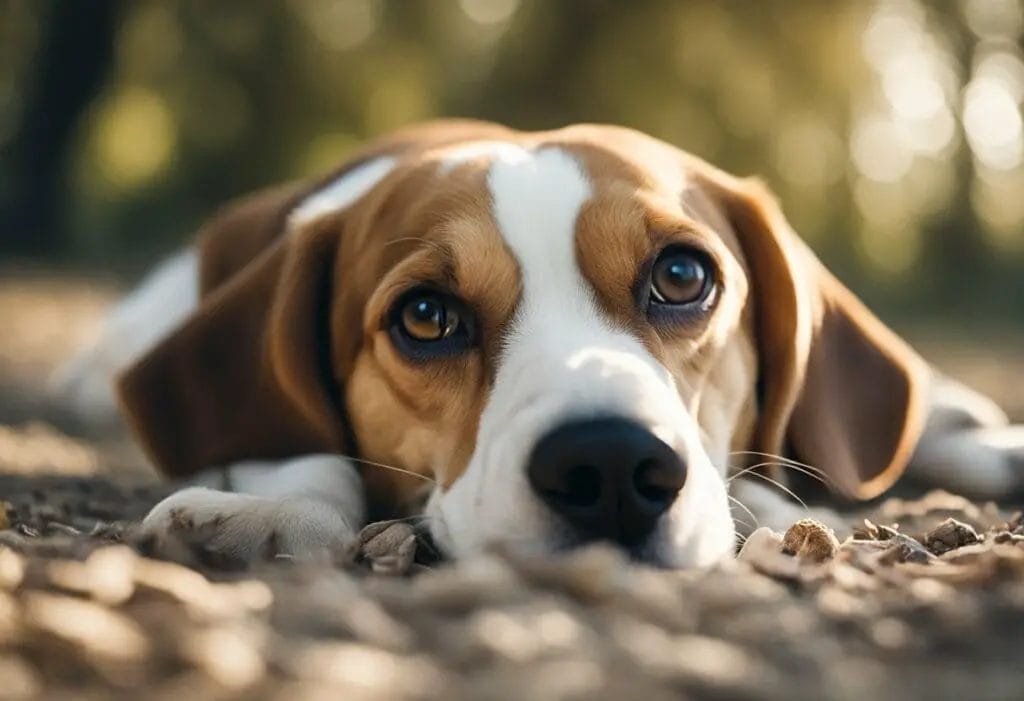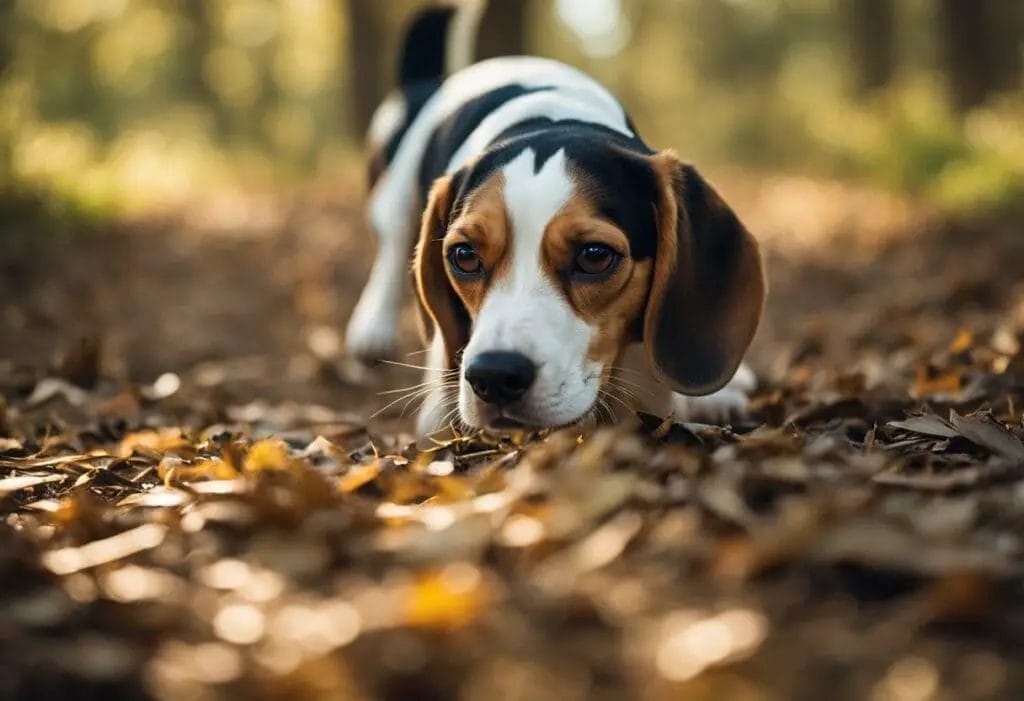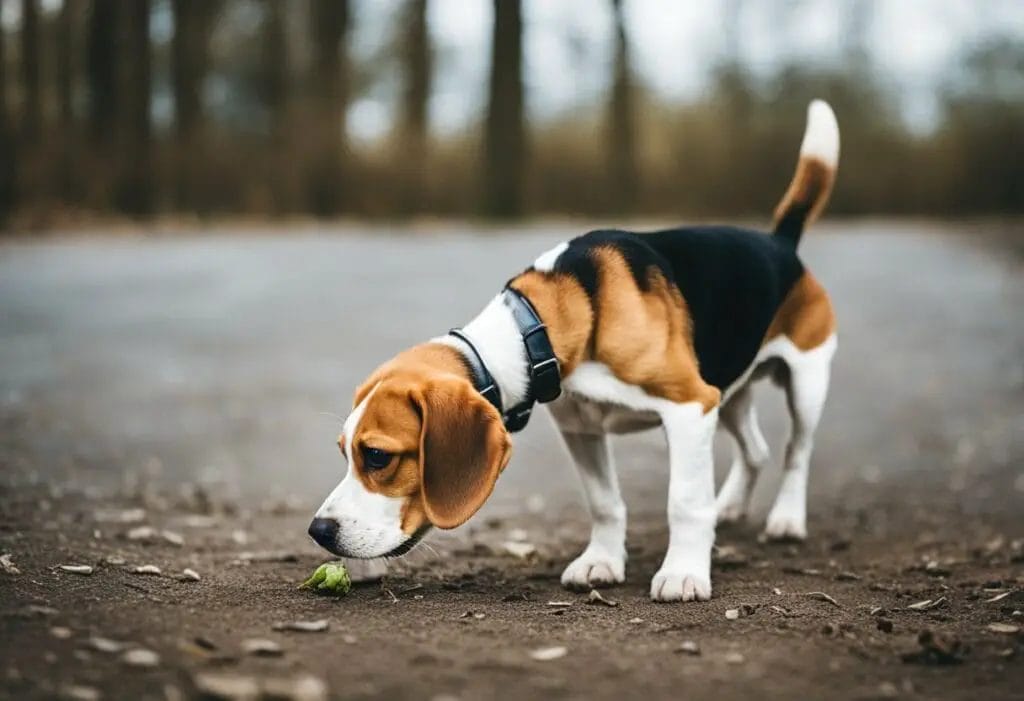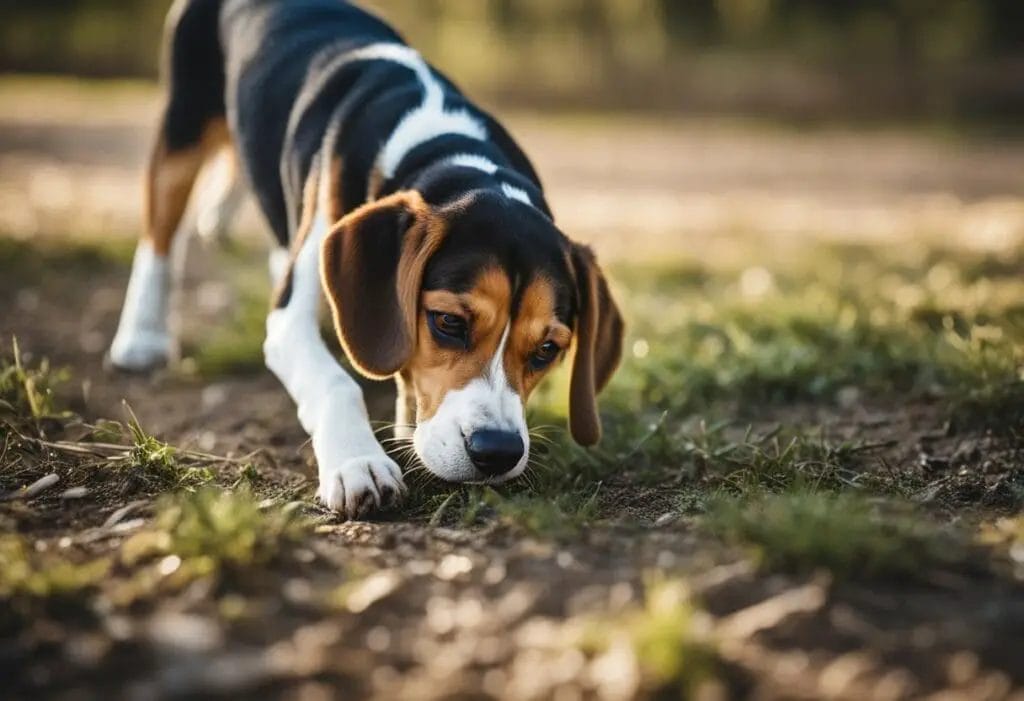Dogs possess an incredible sense of smell. Among the many breeds of dogs, the Beagle stands out for its exceptional scent-tracking abilities. Beagles have been bred for centuries to help hunters track down their prey, and their sense of smell is nothing short of amazing.

Beagles have approximately 220 million scent receptors, which is more than any other dog breed. Their sense of smell is so powerful that they can detect scents that are too faint for humans to detect. In fact, Beagles are often used by law enforcement agencies to detect drugs, explosives, and other contraband. They are also used in search and rescue operations to locate missing persons.
Beagles’ noses are finely tuned to help them track and chase prey. They rely heavily on their sense of smell, but their other physical characteristics also aid in their ability to track a scent.
Their long ears help them catch scent particles in the air, while their long necks allow them to keep their noses close to the ground. Their short legs and compact bodies enable them to move quickly and efficiently through dense underbrush. All of these features make Beagles one of the best scent-tracking breeds in the animal kingdom.
Understanding the Beagle’s Scent Tracking Abilities
As a Beagle owner, I have come to appreciate the unique scent-tracking abilities of this breed. Beagles are known for their keen sense of smell and their exceptional olfactory prowess, which makes them one of the best scent hounds in the world.
One of the reasons why Beagles are such excellent scent trackers is due to the number of scent receptors they have in their noses. According to a study, Beagles have the same number of scent receptors as the much larger German Shepherd and are only second to Bloodhounds in the overall number of scent receptors. The Beagle nose has a lot of surface area and is moist, aiding in the capturing of scents.
The olfactory bulb, which is responsible for processing scents, is also larger in Beagles compared to other dog breeds. This means that Beagles can process scents more efficiently and accurately, which is why they are often used in law enforcement and search and rescue operations.
Beagles are also unique in their scent tracking abilities because they are able to distinguish different odors. This means that they can follow a specific scent trail even if it is mixed with other scents. For example, if a Beagle is tracking a specific person’s scent, they can still follow that scent even if the person has been in contact with other people or objects.
To train a Beagle for scent tracking, it is important to start with basic scent introduction and gradually increase the difficulty of the training. Establishing scent tracking commands and introducing scent tracking trails are also important steps in training a Beagle for scent tracking.
Training Beagles for Scent Tracking
Beagles are natural scent trackers and can be trained to use their noses to locate a variety of scents. Here are some tips for training your Beagle for scent tracking.
Positive Reinforcement
Beagles respond well to positive reinforcement during training. Use treats, praise, and toys to reward your dog for good behavior. Positive reinforcement is a great way to motivate your Beagle to learn and enjoy training.
Basic Commands
Before you start scent training, it’s important to teach your Beagle basic commands like “sit,” “stay,” and “come.” These commands will help you control your dog during training sessions and keep them safe.
Scent Training
To start scent training, introduce your Beagle to a specific scent, like a treat or a toy. Once your dog is familiar with the scent, hide the object and encourage your dog to find it. Use a leash and harness to keep your dog under control during training sessions.
Patience
Training your Beagle for scent tracking takes time and patience. It’s important to be patient and consistent with your training. Don’t get frustrated if your dog doesn’t pick up on the training right away. Keep practicing and be patient.
Happy Training
Make scent tracking training a fun and positive experience for your Beagle. Use toys, treats, and praise to keep your dog motivated and happy during training.
The Role of Beagles in Search and Rescue

As a breed, Beagles are known for their exceptional sense of smell. This makes them ideal for search and rescue operations, where their scent-tracking abilities can help locate missing persons, detect illegal substances, and track suspects.
In search and rescue missions, Beagles are often used to detect specific scents, such as human scent or the scent of a particular substance. They can track scents over long distances and are able to discriminate between different scents, making them valuable assets in search and rescue operations.
Environmental factors and terrains can affect a Beagle’s ability to track scents. For example, wind direction, humidity, and temperature can all impact a scent’s strength and direction. Different terrains, such as forests, mountains, and urban areas, can also present unique challenges for scent tracking.
Law enforcement agencies also use Beagles in drug detection operations. Beagles can detect a wide range of illegal substances, including cocaine, heroin, and marijuana. They are trained to alert their handlers when they detect the scent of these substances, making them valuable tools in the fight against drug trafficking.
In addition to their scent-tracking abilities, Beagles are also known for their friendly and social nature. This makes them well-suited to interact with people during search and rescue operations, providing comfort and support to those in distress.
The Beagle’s Hunting Prowess
Beagles have a natural instinct for hunting small game, especially rabbits. Their keen sense of smell allows me to track scents that humans cannot even detect. In fact, their nose is so powerful that they can even distinguish subtle nuances in the scents. This ability to track and follow scents is what makes them such exceptional hunting companions.
Their persistence and intelligence also play a significant role in their hunting prowess. They never give up on a scent, no matter how difficult it may be to track. They’re also able to quickly adapt to various hunting environments, making them a versatile hunter.
Physically, they’re built for hunting. Their compact size and muscular body allow them to move quickly and efficiently, making it easier for them to track prey. Their long, droopy ears also help them pick up scents more easily, while their short, dense coat protects them from the elements.
While their natural hunting instincts are strong, it is important to remember that they’re not just hunting dogs. They also make a loyal and affectionate companion for families.
Caring for Your Scent Tracking Beagle

Caring for your Beagle’s scent-tracking abilities goes beyond just training them to track scents. It’s also about providing them with everything they need to be happy and healthy.
One of the most important things you can do for your Beagle is to provide them with plenty of mental stimulation. Beagles are intelligent dogs that need to be mentally challenged to stay happy and healthy. You can provide mental stimulation by playing scent games with your Beagle, hiding treats around the house, or even teaching them new tricks.
Socialization is also important for your Beagle’s well-being. Beagles are social animals that thrive on human interaction. Taking your Beagle for walks, to the park, or even to doggy daycare can help them form bonds with other dogs and people. This socialization can help your Beagle feel more comfortable and happy in their environment.
In addition to mental stimulation and socialization, it’s important to provide your Beagle with proper care. This includes regular grooming, exercise, and a healthy diet. Beagles are prone to obesity, so it’s important to monitor their food intake and provide them with plenty of exercise. Regular grooming can also help keep your Beagle’s coat healthy and shiny.
Creating a harmonious environment for your Beagle is also important. Beagles are sensitive dogs that can pick up on your emotions. If you’re stressed or anxious, your Beagle may become stressed or anxious as well. Creating a calm and peaceful environment can help your Beagle feel more relaxed and happy.
The Use of Scent in Beagle Training

It’s important to understand how to use scent in training Beagles to help them develop their tracking abilities.
One of the first steps in scent training is to introduce the dog to the target scent. This can be done by placing a small amount of essential oil, such as lavender or anise, on a cotton swab or a food item, like cheese. Once the dog is familiar with the scent, it can be used to create a scent path for the dog to follow.
In addition to introducing the scent, it’s essential to teach the Beagle to recognize and identify the scent. This can be done by using positive reinforcement, such as treats or praise when the dog successfully identifies the scent.
Another useful tool in scent training is the use of sprays. These can be used to mark the scent path or to help the dog locate the scent. For example, a spray can be used to mark the beginning of a scent path, and the dog can be trained to follow the scent trail from there.
It’s important to note that every Beagle is unique, and some may have a stronger sense of smell than others. With patience and consistency, however, any Beagle can develop its scent-tracking abilities.
Introducing the scent, teaching the dog to recognize and identify the scent, and using tools like sprays can all be effective in scent-training Beagles. With practice and patience, your Beagle can become a skilled scent tracker, utilizing its incredible sense of smell to navigate the world around it.
